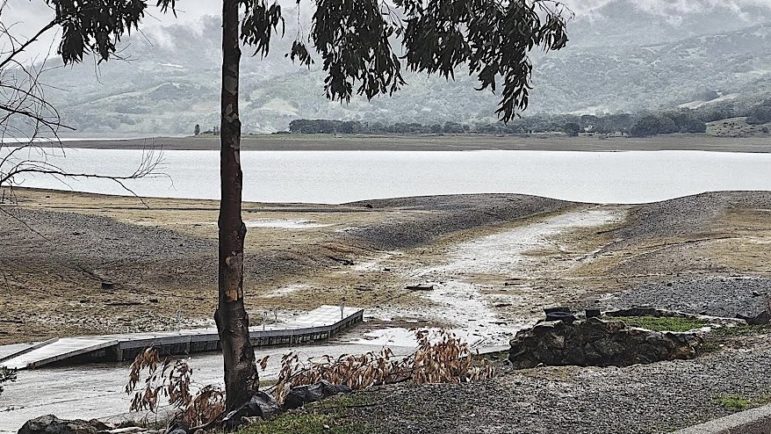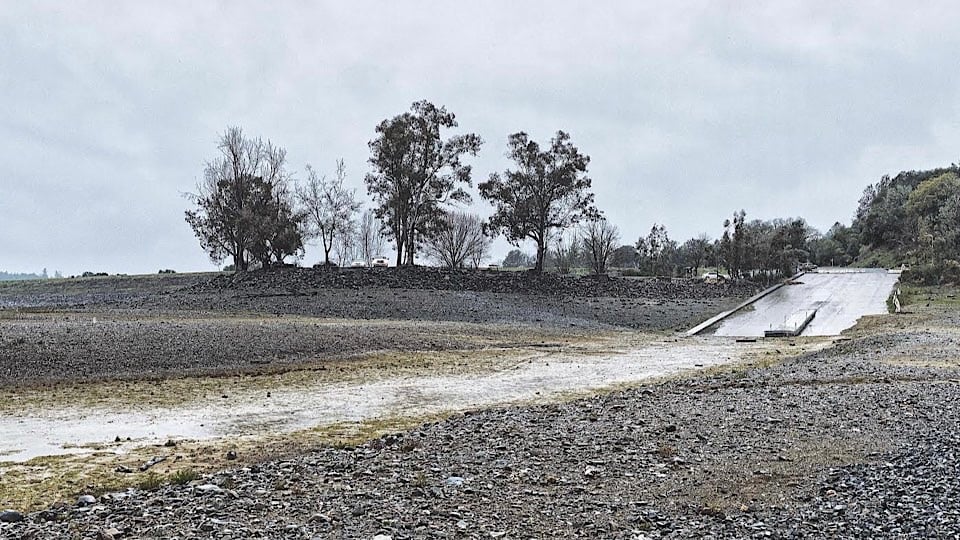Note: Lana Cohen is a Report For America fellow covering the environment & natural resources for TMV & KZYX. Her position is funded by the Community Foundation of Mendocino, Report for America, & our readers. You can support Lana’s work here or email [email protected]. Contact Cohen at LCohen@mendovoice.com. TMV maintains editorial control.
LITTLE RIVER, 3/22/21 — Lake Mendocino and Lake Pillsbury are the lowest they have been for this time of year since they were constructed, rainfall is between six and seven inches behind this time in 1977, and the forecast for the next two weeks has little to offer in terms of precipitation. To summarize, things are looking grim.

In light of low water supplies and a dismal rain forecast, the Russian River Flood Control and Water Conservation Improvement District declared a reduced water supply alert earlier this month, calling for Water District customers “to follow their water conservation plans and begin water shortage contingency planning.”
The Russian River Flood Control District is a water wholesaler, distributing water to Willow, Millview, Redwood Valley, and Calpella water districts, among other customers.
The declaration announcing the water supply alert was made March 8 by unanimous vote of the District’s board — however, since then the outlook has become even more serious.
“This [drought] isn’t new news.” What has changed in the last few weeks is that the forecast is clearly showing that we aren’t going to have the atmospheric river events we would need to significantly fill our reservoirs,” said Beth Salomone, general manager for the Russian River Flood Control, in a brief interview. “I have buckets in all my sinks right now because I know that it’s going to be that bad.”
The effects of the impending drought are not isolated to inland residents who depend on large reservoirs and Mendocino is not the only county speeding into a severe drought. The California Water Resources Board released a “dry year letter” earlier today, reporting that 95 percent of the state is experiencing a moderate to exceptional drought.
“Continued dry conditions can threaten water supplies, impair critical habitat, reduce recreational opportunities, and create uncertainty for all water users. Hydrologic conditions since 2020 have been very similar to the drought years of 2014 and 2015,” the State Water Resources Board wrote.
Similar to local calls for limiting water use, the state urges residents to start planning for shortages. “Identify practical actions you can take to increase drought resilience, such as increasing water conservation measures, reducing irrigated acreage, managing herd size, using innovative irrigation and monitoring technologies, or diversifying your water supply portfolio.”
California State Water Resources Board Dry Year Letter
ONGOING DRY CONDITIONS IN MOST CALIFORNIA WATERSHEDS – PREPARE FOR DROUGHT IMPACTS STATEWIDE
After two years of low precipitation, the U.S. Drought Monitor now reports that 95 percent of California is experiencing Moderate to Exceptional Drought. Reservoir and groundwater levels are significantly below average, and despite recent storms, snowpack is only 58 percent of average as of March 10, 2021. Continued dry conditions can threaten water supplies, impair critical habitat, reduce recreational opportunities, and create uncertainty for all water users. Hydrologic conditions since 2020 have been very similar to the drought years of 2014 and 2015.
Your early efforts can help minimize the potential impact of water management actions on businesses, homes, farms, and California’s public trust resources. Start planning now for potential water supply shortages later this year and identify practical actions you can take to increase drought resilience, such as increasing water conservation measures, reducing irrigated acreage, managing herd size, using innovative irrigation and monitoring technologies, or diversifying your water supply portfolio.
The Division of Water Rights (Division) relies on accurate and timely water use data from you and other diverters to help manage California’s water. All diverters must report their annual water use, and many diverters must report diversion metering or measuring data. By accurately reporting your water diversion and use data on time, you fulfill your legal reporting obligation and provide critically important information for managing the state’s water resources.
The Division is monitoring the situation closely and plans to engage more frequently with water users if dry conditions continue or worsen. We encourage you to work collaboratively with your community to develop cooperative water management solutions that meet both local and state-level needs.
More information on Drought Conditions can be found
at: https://www.drought.gov/drought-status-updates/drought-status-update-california nevada
More information about the Division of Water Rights can be found at: https://www.waterboards.ca.gov/waterrights/





Well if we want to keep our Lake’s filled then we need to stop giving water to Sonoma and all the other counties that drain us dry